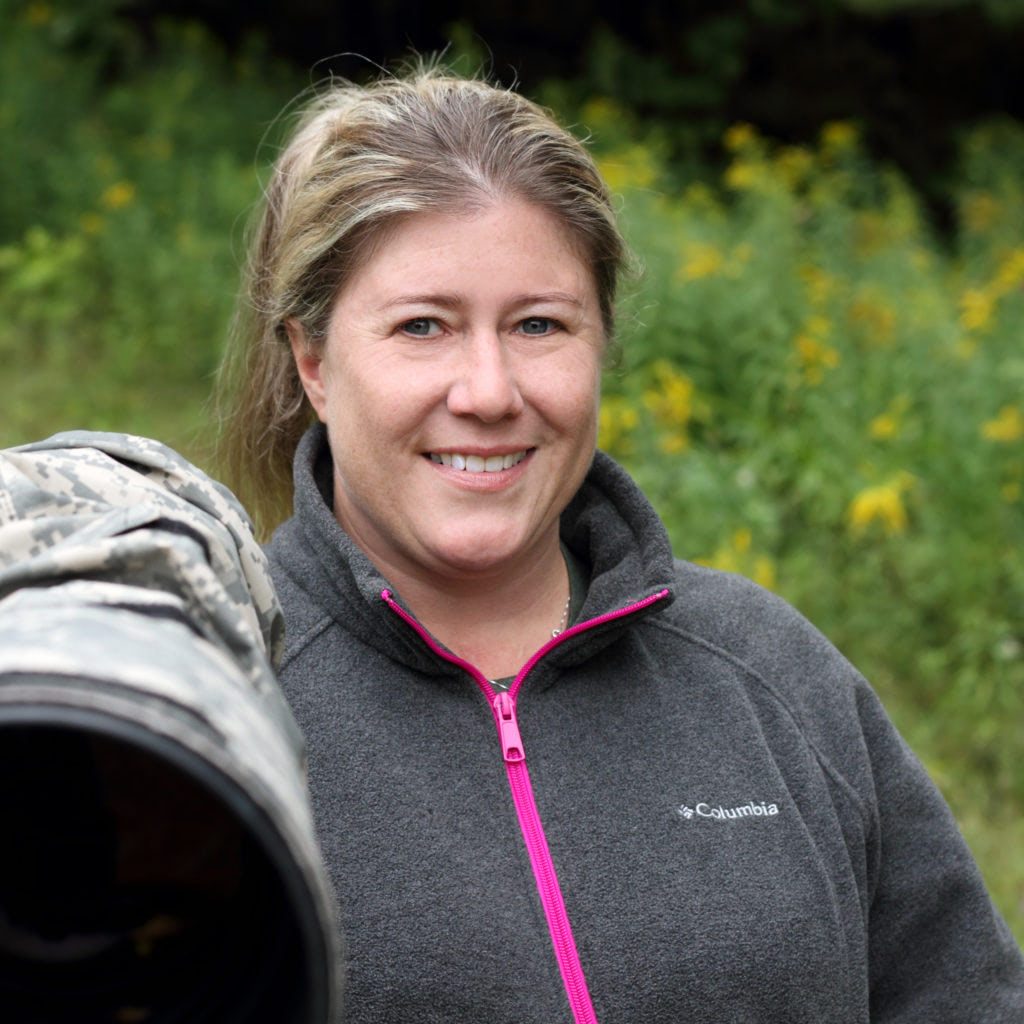We had the pleasure of catching up with Toronto based wildlife and nature photographer, Megan Lorenz. Her passion for wildlife results in her taking stunning photographs ranging from Red Foxes in Canada to Ghost Glass Frogs in Costa Rica.
In addition to her online gallery of photographs, Megan’s work has appeared in several advertising campaigns, including a major campaign for Canon. Her work has also been featured in international publications including National Geographic, National Wildlife Federation, Canadian Geographic, Smithsonian, and Ranger Rick Jr. Magazine to name a few.
In 2012, Megan was a Queen Elizabeth II Diamond Jubilee Medal Recipient for her contribution to Canadian wildlife photography. She was also the 2015 Grand Prize Winner of the Windland Smith Rice International Award. Her winning photo was on display at the Smithsonian National Museum of Natural History in Washington, DC.
Megan also leads photography workshops. She believes that intensive knowledge of a species’ behavior, traits, and habitat is paramount to successful wildlife photography. She has an unending amount of patience, which helps her in the field when she is waiting for the perfect moment.
When she isn’t searching for wildlife in Ontario, Megan keeps herself busy by photographing people and pets in her studio. Additionally, she provides photos to the Canadian Wildlife Federation and uses her work to educate, inform, and fundraise for this important organization.

When did you realize photography was a passion of yours?
I still remember my first camera when I was a child. I started to take photographs right away, although I didn’t get my first DSLR until 2007. As soon as I purchased a DSLR, I was hooked. Pet and wildlife photography was a natural choice for me because animals have always been such an important part of my life.
Where was this photo taken?
This photo was taken in the Algonquin Provincial Park, which is one of my favorite locations in Ontario, and one that seems like a second home, at times.
What struck you about this scene or location?
Red Foxes are one of my favorite subjects to photograph especially when their coats are getting thicker as winter approaches.
What were you “after”, or what was your goal for this shot?
I was looking for a closeup, a feeling of connection with the fox, direct eye contact with a pleasing background.
What variables did you have to compensate for?
Finding the background with the colors and lighting I was looking for took some patience, but it was worth waiting for the moment. I prefer to keep post-processing to a minimum, so this image is not cropped and has only basic color corrections.
What type of reaction do you hope it produces in viewers?
I like images which draw the viewer into the photograph, so they feel they have a connection with the animal. The blurred background makes the fox stand out with no distractions.
What camera and lens did you use? Why?
For this shot, I used a Canon 1DX Mark II and 100-400mm lens with f/5.6 at 1/320 sec, iso 640, 400mm. Usually, I use my 500mm, but I love the flexibility of having a zoom lens, which I can comfortably hold in my hand when animals are in close proximity. This helps when I want to capture the photograph because then I don’t have to move around as much and risk disturbing them.
Why did you choose this photo for the TruLife® Acrylic face mount?
I loved the colors in this photo and planned on displaying it in a room which has large windows and constant lighting issues. The anti-reflective feature of TruLife Acrylic was very beneficial, and the difference between TruLife and other acrylic prints was immediately apparent.
The clarity, depth, and vibrancy are impressive at all times of the day and night and in natural light and indoor lighting.
We heard a rumor that you have some fears when it comes to photographing certain subjects. So, what are these fears?
Many of the situations in which I photograph and the subjects that I photograph are fears of mine. For instance, I’m terrified of heights, but I will often place myself at the edge of a cliff if that’s what it takes to get the photo.
Besides the fear of heights, I also have a fear of a few small animals. I have a fear of parrots (both large and small), but I will still photograph them flying free in the wild. I’m not comfortable around snakes either, but have photographed them and somehow managed to complete my task without running away screaming.
I also fall apart when I see a small spider in the house, but I have photographed spiders while on trips to Costa Rica because I still can see the beauty in something that scares me. Click here to see a good example of one of my photographs.
Where can readers find more about your work?
Website: http://www.mlorenzphotography.com/
Facebook: https://www.facebook.com/mlorenzphotography/
Instagram: https://www.instagram.com/mlorenzphotography/
Twitter: https://twitter.com/m_lorenz
If you enjoyed this post, sign up to receive additional information from TruLife Acrylic and current promotions from our partners.
Purchasing as a gift? Please note that processing your TruLife Acrylic print can take up to two weeks, so check with your fabricator, and get your holiday orders in soon.
Share this Article:
